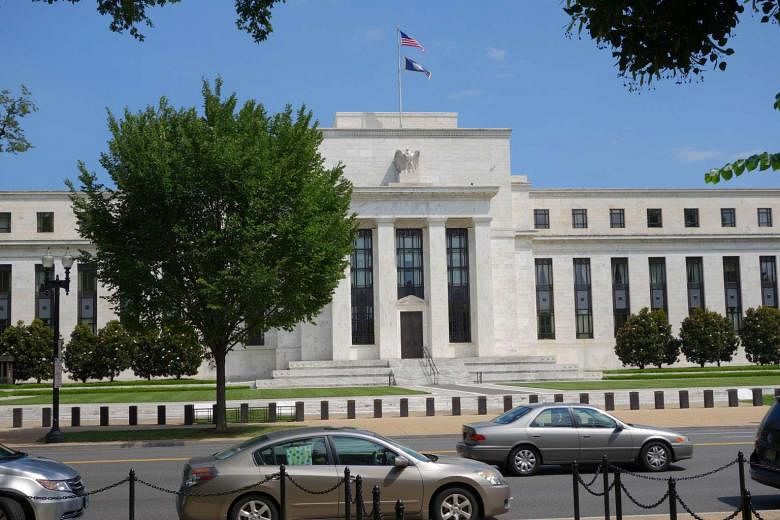WASHINGTON • The recent financial turmoil is already fuelling speculation about a fourth round of quantitative easing by the United States Federal Reserve, which would again step in to buy financial assets, boosting prices and repressing volatility.
This wishful thinking is unsurprising for markets that have been conditioned to view central banks as their best friend. Yet, the Fed is unlikely to oblige any time soon, nor should it.
With policy interest rates floored at zero in recent years, the Fed has used its balance sheet to normalise financial markets and pursue its dual mandate of promoting employment and stable inflation.
The first round of quantitative easing (QE1) during the global financial crisis was aimed at repairing a highly dysfunctional financial intermediation system. QE2, in 2010, was intended to stimulate economic activity.
The Fed resorted to additional stimulus, including its QE3 in 2012 , as the economy then languished in a low-growth, "new normal" equilibrium.
Despite a few hiccups and disappointing economic growth, this string of so-called unconventional monetary measures succeeded in lifting asset prices and kept market volatility in check, turning central banks into close allies of the markets.
It was to be expected that the recent vertiginous plunge in equities and other risk assets, along with a spike in volatility, would lead to predictions that a new set of measures was in the offing.
Here is why that is unlikely to happen any time soon, if ever.
First, the Fed now wants to normalise monetary policy, and not venture even deeper into uncharted territory.
The first policy consequence of the market rout is to virtually ensure that the central bank will not choose September to carry out its first rate increase in nine years. It also reduces the probability of a December hike, though that remains a possibility because not all the consequences of the recent turmoil are negative for the US economy (for example, lower prices for oil and other commodities, and the decline in market interest rates).
Second, unconventional policies have not proved as effective as expected in stimulating high and sustainable growth. Indeed, the Fed has repeatedly had to revise downwards its projections.
Central bankers have also been forced to pay greater attention to the potential for collateral damage and unintended consequences - including distortion in the financial markets, misallocation of resources and the inadvertent worsening of wealth inequality.
Third, the origin of the financial market dislocation is outside the US this time. The turmoil reflects the general slowdown in the emerging world, including China, along with worries that policymakers there have less capacity to respond quickly and effectively.
More generally, to echo Indian central bank governor Raghuram Rajan, there are genuine questions about whether the world's central banks have the ability to continually intervene in markets, and about whether they should want to. Finally, having exited the third round of easing in a relatively orderly fashion in October last year, the Fed would be hesitant to place itself in the same position again - not only for economic reasons but also because of the political risks involved.
So it is premature to expect the Fed to come to the rescue of the markets via a QE4. And such a step would probably not be in the broader interest of the economy at this stage.
Markets need to get used to finding their equilibrium with less exceptional help from central banks. We should hope that they will be able to do so in future by relying on better fundamental economic conditions.
BLOOMBERG

